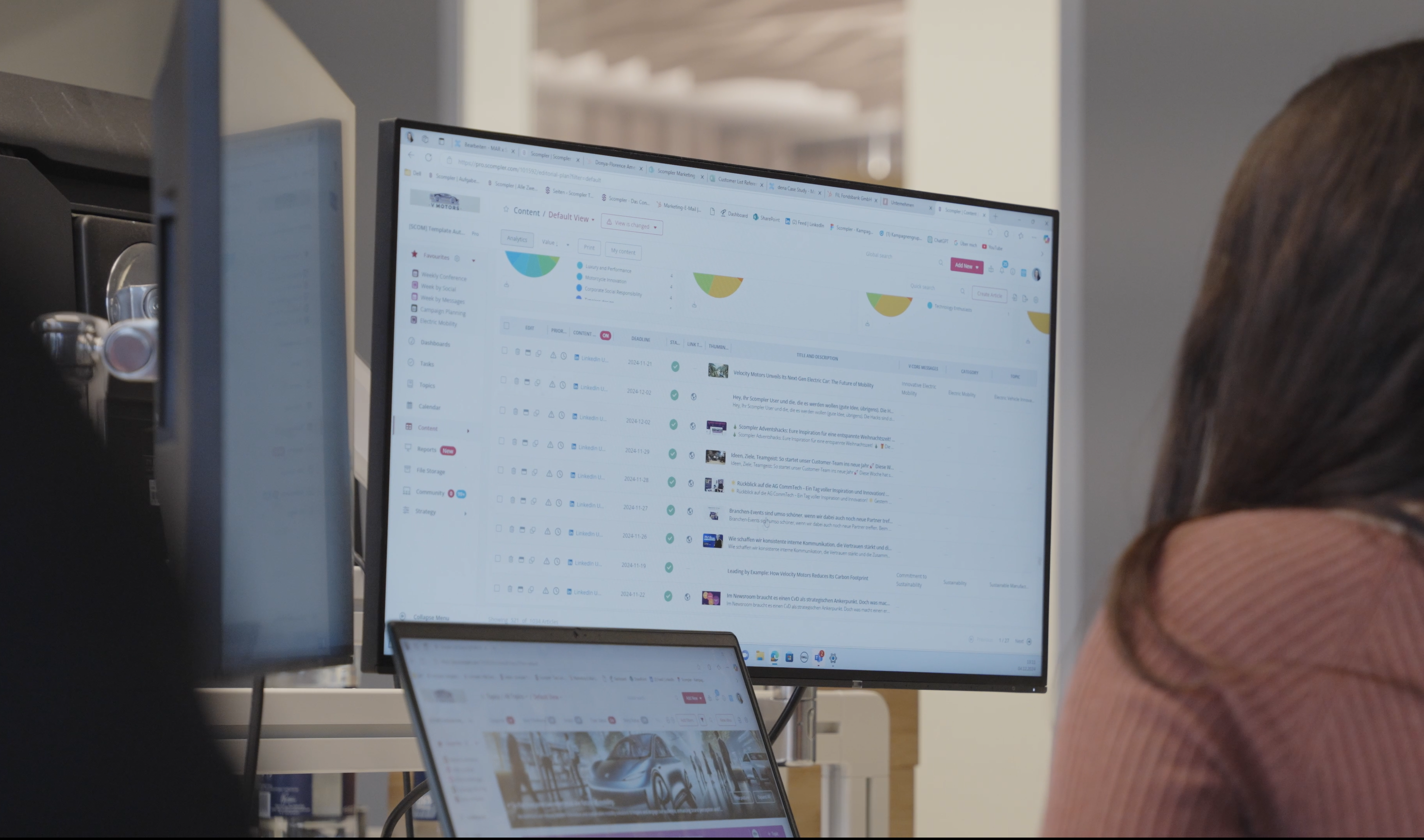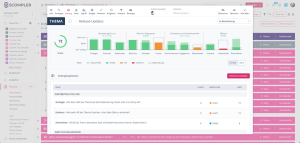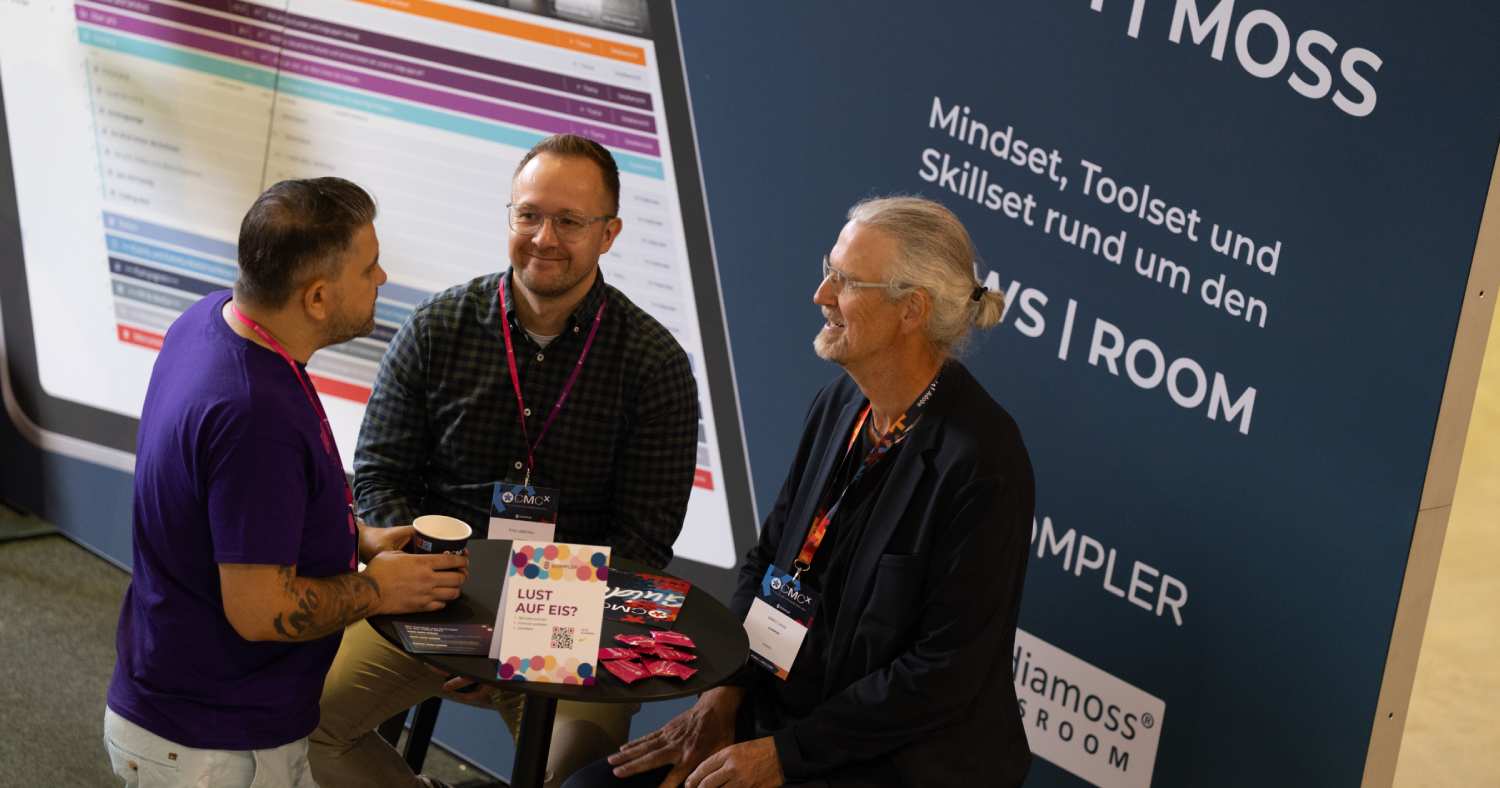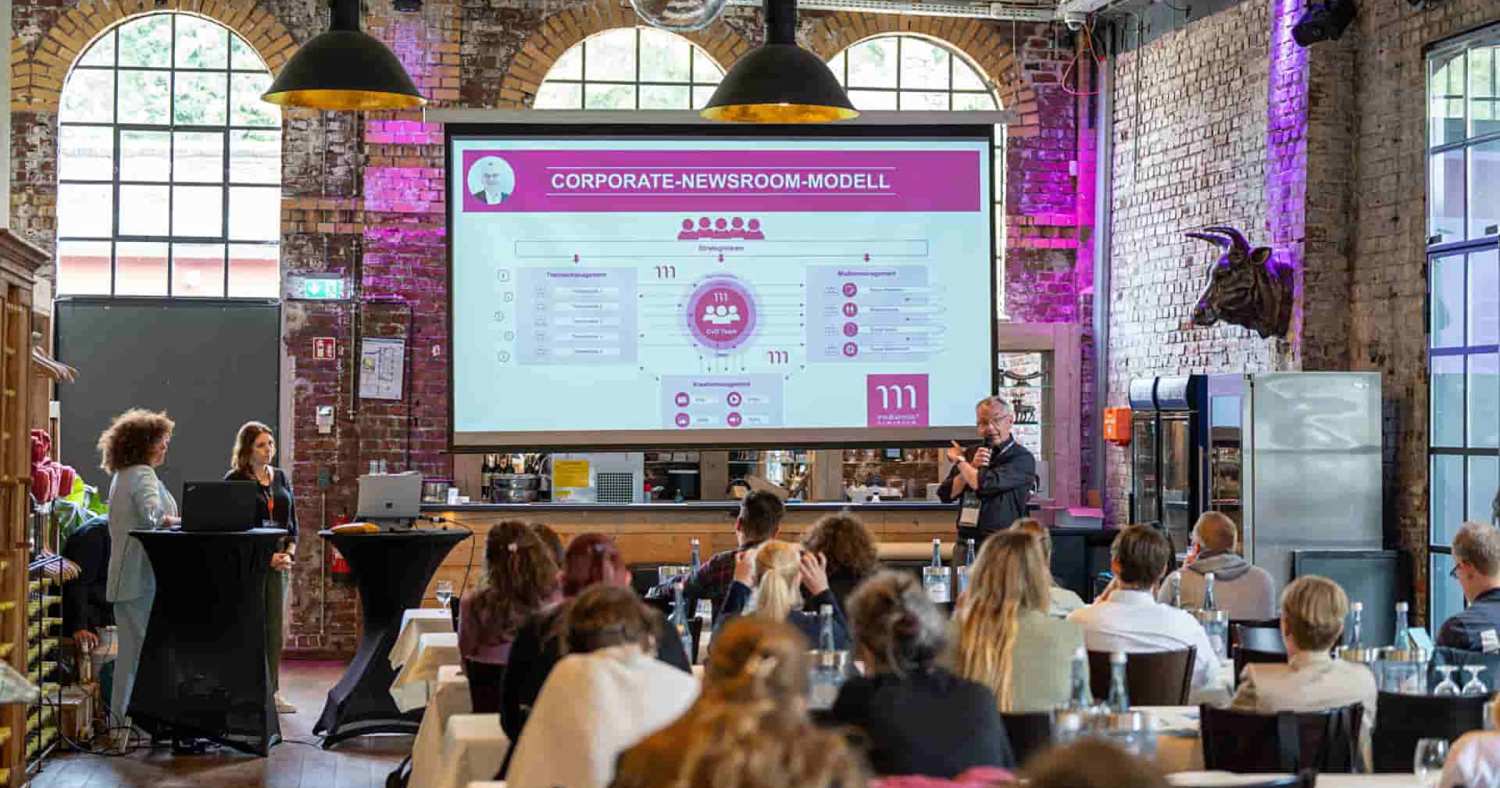Good user experiences not only need well thought-out design, but also effective communication. The Communication & Community Core Team of Deutsche Bahn UX shows how complex topics such as accessibility, user-centered development and internal processes can be communicated in such a way that they are understood, appreciated and passed on.
Jennifer Lange and Linda Moers from Deutsche Bahn provide insights into their communication strategy - and show how they use Scompler to strategically plan their topics, make them visible across channels and promote internal collaboration at the same time.

Jennifer Lange
German Railways
As Lead of UX Communication & Community at DB Fernverkehr, Jennifer Lange built up the strategic communication work of the User Experience Council. In order to enable topic-centered communication, she was instrumental in mapping UX communication with all its target groups, strategic goals and tonalities in Scompler . She was able to set up her first newsroom for the Skydeck Innovation Lab at DB Systel. Today, she contributes her expertise to strategic communications work at DB Cargo Logistics.
Jennifer, what is your mission at Deutsche Bahn UX - and what topics do you talk about?
Jennifer Lange: "DB UX has set itself the goal of breaking down the silos of the various DB business areas - because we are one Deutsche Bahn and we want to show it. That's why we want to anchor the visibility and impact of user-centered product development internally within the Group in the long term. The area of responsibility ranges from our product and the expansion of tools to ongoing collaboration with other business areas and even European networking.
Working with a modern newsroom approach and a platform like Scompler is not a matter of course. What would you say is the greatest added value?
Jennifer: "Before the first newsroom in the DB Skydeck became a reality, it all started as a one-woman show - with Excel as the central planning tool. It worked well in the beginning. But as editorial complexity grew and the number of contributors increased, the system quickly reached its limits: Overview, coordination and strategic alignment became a challenge.
In order to meet these requirements, I recognized the need for a professional editorial setup with Scompler as the central platform early on. I presented the added value of a topic-centered editorial team in several pitches to various stakeholders within Deutsche Bahn. In close coordination with other railroad departments, a well-founded strategy was developed: personas, dashboards, clearly organized topic rooms and the possibility of real-time collaboration became decisive levers for the effective further development of editorial work. Content could not only be controlled in a more targeted manner, but also significantly expanded - our communicative cosmos has grown exponentially and become more controllable at the same time.
But the real change began internally - with a rethink about how we understand communication and how we want to work in the future. Strategic communication is not a "nice to have", but a central lever for change - if the attitude and tool fit together. This approach was just as suitable for DB UX: the community already existed, a lot of high-quality content was available and the advocates approach - that everyone can contribute something - provided a strong basis. At the same time, it was clear that this wealth of contributions could only be effective if it was organized, strategically bundled and managed."
About Deutsche Bahn
Deutsche Bahn AG is one of the largest transportation and logistics companies in Europe and is headquartered in Berlin. It employs around 320,000 people worldwide, 220,000 of whom work in Germany. The company is active in over 130 countries and offers services in passenger and freight transportation as well as rail infrastructure. In Germany, DB operates the long-distance and regional train network, suburban trains in many metropolitan regions and numerous railroad stations and maintenance sites.
ow did you integrate Scompler into your communication work?
Jennifer: "Before we started the communication planning in Scompler , we did a big analysis of our entire strategy, a kind of all-round analysis.
- What are the USPs of DB UX?
- How do these fit into Deutsche Bahn's overall strategy?
- Which personas can we define for ourselves?
- How do they differ - and which channels do we want to use to reach them?
We have defined four personas in our communications work, including users, middle management and senior management. Everything about these personas is stored in Scompler - what they are called, when we address them, how we address them. This knowledge is now no longer just in instructional PDFs that nobody can find, but directly in Scompler.
When we now plan a topic, we consider which persona this is of interest to, which goals we are pursuing with it and plan the communication more granularly down to the individual content piece. After all, the channels have a different weighting depending on the persona. Middle and senior management need one-pagers, LinkedIn posts or direct mailings. In contrast, we reach our designers and developers with videos and blog articles. With Scompler , we avoid content that is not read or seen and consciously target it where we think it makes the most strategic sense. We don't create an asset without looking at the strategic goals.

Linda Moers
German Railways
As Content Lead, Linda Moers is responsible for the strategic development of content for the UX community. She anchors the team's strategic goals in Scompler and uses them in her day-to-day communication work. She finds everything she needs for her communication in Scompler .
Linda, you plan and produce your communication in Scompler every day. What has changed as a result?
Linda Moehrs: "Scompler is our newsroom. Our team works in different locations and yet, thanks to Scompler , we come together in exactly one place every day: The tool is our space where everything related to our strategic and communicative work is stored. This is where we come together and plan the day, the week, the month - with content that is relevant for our target groups and reaches them reliably. Scompler gives us orientation.
Anyone who communicates and creates a lot of content knows what it's like to work passionately on something, to want to tell a strong story, and then to digress and ask yourself: is this communication being designed in a meaningful way? But because we have stored our strategic and tactical communication goals, as well as our target groups, in the platform, Scompler helps us to never lose sight of the goal.""
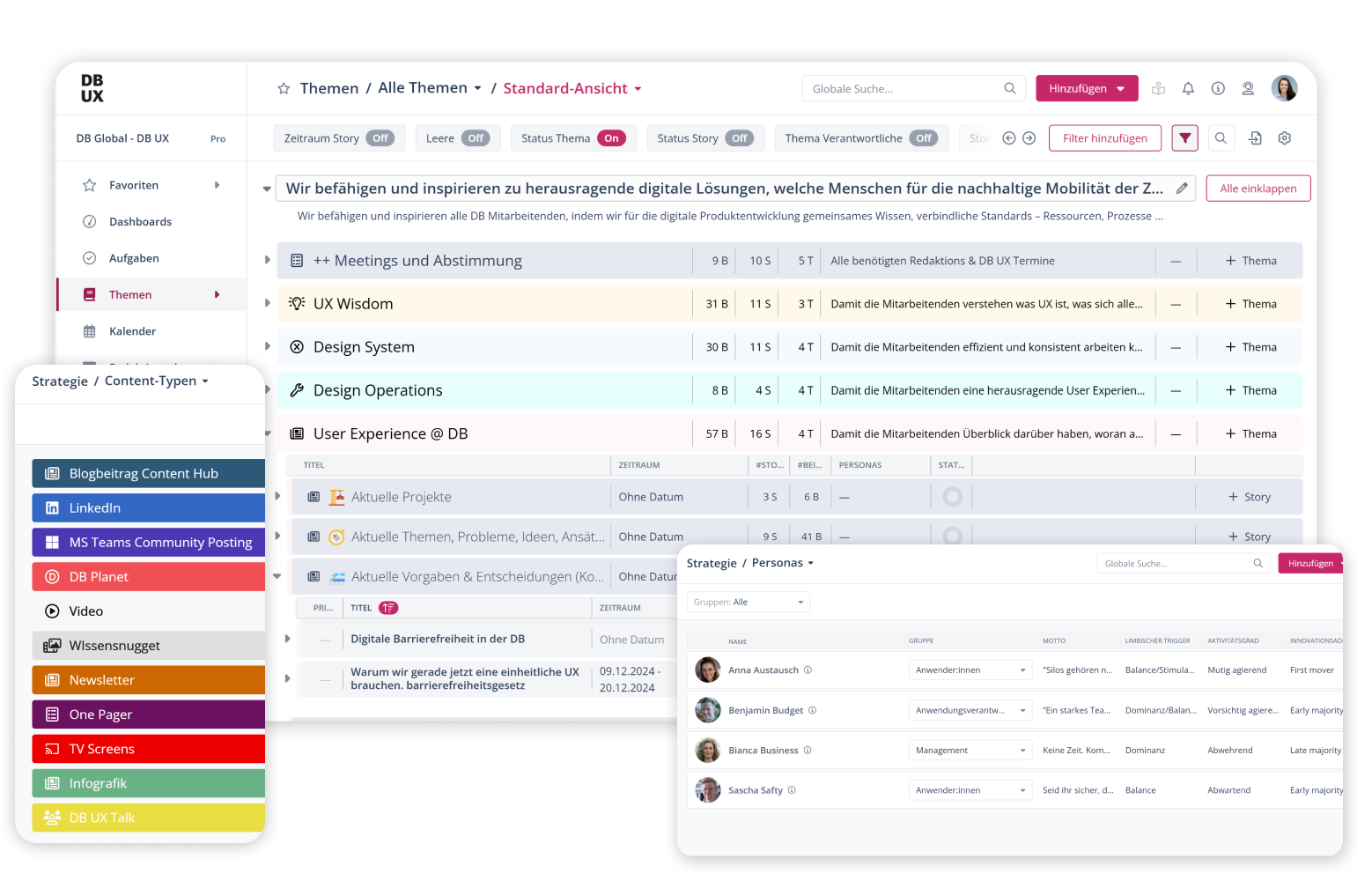
What did your communication planning look like before Scompler ?
Jennifer: "I actually worked with Excel lists to keep the editorial team running. But our team quickly became too complex for that. After all, DB UX also employs designers, interns, juniors and students, as well as agencies and internal service providers. It's impossible to map all these people, their needs and topics in an Excel spreadsheet. So I had to keep an overview, think bigger and further - but the Excel spreadsheet didn't let me understand at all which topic we could continue to use and how, in which formats and on which channels."
Linda: "Before Scompler , there was a PDF with a strategy somewhere, there were folders with images, folders with text documents. So everything you need to implement communication was scattered somewhere. You often had to open several folders, presentations and boards to find out who we were talking to today and what tone we wanted to use to address the target group. Which channels do we use to reach them again? What formats had we defined for the persona? When you do this every day, you naturally have a lot on your mind. But we work together as a team. Especially when it comes to handovers and approvals, it's important that the information is easily accessible for everyone in one place."
And what is your content production like now?
Linda: "When I work on texts in Scompler , the text check reminds me of the tone of voice I should use to address this target group. This includes not only the tonality of the language, but also certain rules that are central to our communication: Neologisms, capitalization when addressing them and so on. This is a huge help in content production, especially for new employees who have not yet fully internalized the personas and our tone of voice.
The Scompler at DB UX
- Strategic and tactical communication goals as the foundation for all content pieces
- Target group-specific content planning with personas
- Transparent overview thanks to individual calendar and project views
- Editorial efficiency & teamwork through transparent access to content, image material and tonalities
- Text work with strategic security thanks to integrated text checks
- More efficient process and approval management thanks to traceable workflows and approvals directly on the contribution
- Single source of truth instead of fragmented tools: Scompler is the digital place where everything comes together.
In Scompler , we not only have our personas, but also image material and all the assets we need for content planning and production. I can ask for feedback directly in the article, which makes the approval process much more efficient. In addition, the numerous views and the calendar give me an exact overview of when which content is planned on which channel, or whether I need to make adjustments."
You have changed a lot in your strategy development, but also in operationalization, since you started using Scompler . What were your biggest challenges?
Jennifer: "I still see the necessary resources and appreciation for our work as a major challenge. Job descriptions for marketing or communications managers often combine ten different specializations in one role - from content to social media to analytics - without the necessary resources being considered accordingly. Budgets for our disciplines often come from a pot that is discussed by people who think about our work, but rarely really understand it.
It should be clear: We are not the worker bees who simply do what "the queen" tells us to do. What drives us is something else: the freedom and professionalism of a butterfly that curiously discovers topics and the agility of a dolphin that moves confidently in the sea of communication. We don't just want to implement, we want to help decide what carries weight and what is less suitable. We are the professionals - and that is how the marketing and communications department should be perceived: as a strategic unit with its own expertise, not just as an executive body.
We do things differently in our DB UX team. What communication has achieved and will achieve is valued and recognized. This constant discussion about resources is an internal struggle that many newsrooms face - but if the newsrooms have a clear strategy and operationalize it, they are best able to withstand this pressure."

